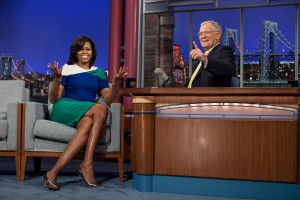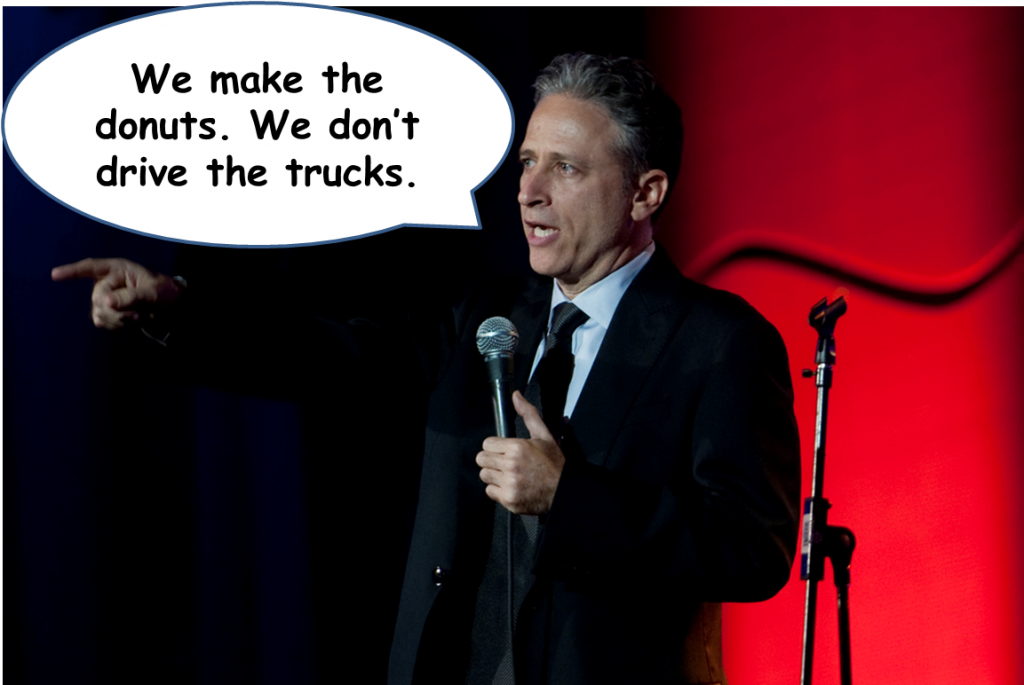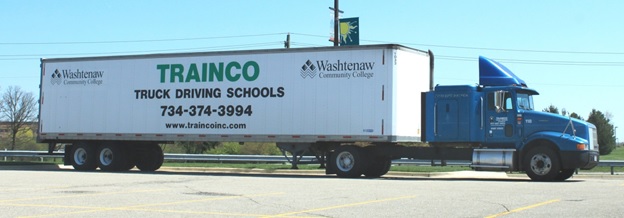Fans of The Daily Show may be thinking it will never be the same because of Jon Stewart’s departure, and the many question marks surrounding his replacement, Trevor Noah.
But you don’t know the half of it. Comedy Central announced last week the hiring of Baratunde Thurston, author, humorist, and social activist to oversee new digital content creation and distribution.
And what makes this interesting is that it was exactly ten years ago that Jon Stewart waved off questions about distribution, saying he only concerned himself with his political satire. In his mind, he and his staff were charged with creating the humorous content. How it would be delivered was someone else’s problem, or something that future producers would confront. Well, the future is now.
Interviewed in Wired, Stewart’s quote (shown in the photo above) became a popular part of our digital presentations, as well as this blog. Back in 2009, we discussed how radio stations needed to be concerned about “the trucks,” better known as content distribution. You can read that post – “Delivering the Donuts” – here.
These days, The Daily Show brain trust is looking at the media world much differently, and not just because Stewart is passing the torch to Noah. The New York Times reports that Thurston’s hiring (he was formerly with The Onion) signals a change of strategy for the show. He outlined their new digital plan of attack:
“There’s more to what The Daily Show can make than what people have seen. This is a 21-and-a-half minute show that airs on a box in your house, and it can also be a great experience on these other platforms.”
 In the entire article, Nielsen is never mentioned. That’s because their team is now thinking outside the program schedule and beyond the ratings, focusing on content in places where their viewers congregate – in their own time. It’s an acknowledgment they’re rethinking their entire distribution model, and not just the content creation process.
In the entire article, Nielsen is never mentioned. That’s because their team is now thinking outside the program schedule and beyond the ratings, focusing on content in places where their viewers congregate – in their own time. It’s an acknowledgment they’re rethinking their entire distribution model, and not just the content creation process.
So let’s put it in radio-ese.
Your morning show (minus the music, commercials, service elements) may be creating approximately an hour of content every day (of course it varies). But much of that lives pretty much on the transmitter/tower site. Where else can you create exclusive content on the channels your listeners frequent that go beyond your daypart and your air? How can you provide a great experience on the other platforms your audience uses?
You first have to have an understanding of the sites, channels, and destinations they frequent. This is why the 200+ stakeholder commercial stations (and the 50 public radio stations) that participate in our Techsurveys have an actionable data set that defines their audience’s channel consumption. They’re learning where their audience is going when they’re not listening to radio.
For The Daily Show, this means Instagram and other channels. The article notes that Jimmy Kimmel and Jimmy Fallon have each mined digital media well, creating a challenge to all TV producers to create viral content that can expand the audience, as well as explode the boundary lines of a conventional time slot.
In many ways, The Daily Show will be playing a game of catch-up, as they rethink how they create chunks of content that will be customized to distribution outlets that have nothing to do with a cable TV channel. Not surprisingly, Stephen Colbert has been busily creating content of all digital sorts during his long hiatus prior to moving into the old Letterman slot on CBS-TV next week.
Speaking of which, radio teams, personalities, and programmers themselves would be wise to take note of this digital activity on the TV side of the street. Historically, television’s talk show hosts have influenced radio DJs, especially David Letterman. His heavily benchmarked, bit-oriented strategy inspired hundreds of radio personalities to develop funny bits, time stamp them, and executive them every day like clockwork.
That strategy has paid off for many radio personalities, riding the wave of go-to features like “War of the Roses,” and other staples of morning radio. That no longer may be enough, as The Daily Show team has figured out. The move to digital and social platforms by TV’s new guard should be having the same influence on radio’s stars of today as Letterman did three decades ago on the DJs of that era.
Podcasts, video, and social media have often been viewed as burdens by many in radio – new channels that require even greater time, effort, and education. But challenging that logic and embracing these new outlets makes a world of sense for a medium that is under pressure to stay relevant to both listeners and advertisers. As the TV guys have learned, these new distribution channels offer fertile environments in which to expand brands, grow audiences, and create new content that just doesn’t work in a standard daypart or in a PPM-pressurized break.
Learning how to “make donuts” and skillfully “driving those trucks” are the profound challenges in front of radio’s air personalities and the companies they work for.
The need for corporate teams and ownership to embrace these concepts, and provide guidance and financial support has never been greater.
Time to enroll in truck driving school. And please pass the donuts.
- What To Do If Your Radio Station Goes Through A Midlife Crisis - April 25, 2025
- A 2020 Lesson?It Could All Be Gone In A Flash - April 24, 2025
- How AI Can Give Radio Personalities More…PERSONALITY - April 23, 2025






This sentence reveals the perspective of a FOLLOWER:
“The move to digital and social platforms by TV’s new guard should be having the same influence on radio’s stars of today as Letterman did three decades ago on the DJs of that era.”
This is an area where the agility of radio should position it to be the LEADER, in my opinion.
But there is a lot of US and THEM talk… RADIO and TV… AUDIO and VIDEO.
What needs to be understood is the technology landscape is changing NOW and the distinctions between the two are fading rapidly; they are converging. TODAY, anyone with a smartphone has a radio and tv broadcast station in the palms of their hands… plus a feedback loop for optional audience participation (not just outbound casting). Regular people are learning to use these tools effectively, some are innovative and will become pros.
The leaders in this transitioning market arena will win. Current professionals have a serious head start. I wonder whether they will take advantage of it… or wait for someone else to show them what to do and PERHAPS they will have a chance to follow once again.
I don’t mean to imply that all the creativity is on the tube. But the truth is that TV has influenced radio greatly, and there are some inspirational things happening by TV hosts. There’s no question that radio innovation is the goal here. How we inspire it is up for conversation. Thanks, Rick.
True…but not at the expense of the main product. I constantly see both in meetings and studios the intense focus on digital…with very little focus on the actual Entree of the meal you’re serving. “How many followers are we at…how can we get more Likes/Shares??” versus how we can raise our Share? Try telling your sales staff or GM to sell “# of followers.”
Look even at the job postings: “are you a social media star??..we want to see your InstaTweetBook, video and oh btw, send an aircheck if you have one.” Typing over talking, blogging over broadcasts. Most of it coming from PDs who don’t even have a Twitter account. It has bred a “go to our FBOOK page for info” standard that yes, cuts down on clutter but also leaves your listener half empty with “well that was pointless noise & I know nothing more for hearing it.”
Online and digital is like imaging is to a station. It’s necessary, it had better be good, but it’s an extension meant to highlight what your main product is. It can’t be the priority otherwise it gets in the way and defeats what we still are first and foremost…1 person talking to another ON the radio.
The donuts you are promoting better taste good in the first place, otherwise no one cares what the box it comes in looks like.
No doubt, Dude, that there’s a pecking order to all this. The mother ship goes first. But too often, that’s mostly the extent of it for many radio shows, ignoring the other channels the audience accesses. I’m all for great tasting donuts.
Great post Fred! Clearly, there are a number of new distribution models that provide the radio industry with meaningful ways to engage deeper with their audience, expand their brand, and develop new revenue streams. Online video consumption (and revenue!) continues to grow at a tremendous pace. Radio already does a great job with live audio. Adding live video opportunities gives the radio industry the opportunity to participate in this growth!
I’m down with all this, Neil. There are great outlets that radio can step into. Thanks for the comment.
Bravos, Fred. Strong post. FWIW, here’s something I wrote back in 2007 about “exporting” content:
Building the better mousetrap, creating engaging content, offering the best programming is certainly important, yet, it’s not really enough to ensure sustained success. It is becoming the start, the first big step whereas, once upon a time, the very same work product was considered to be the finished art. It would seem that the best used by date on that traditional approach is drawing near. Welcome to the 21st century. Game on!
Dave, this is a great point, and speaks to the need to build brands, ratings, and revenue with these other rapidly growing sources. Thanks as always for chiming in.
Radio dude makes some very valid points. Too often we worry about how much gas the donut truck has, does the oil need to be changed and does the entire truck need to be washed. If the donuts you are delivering are stale then none of those other things matter.
Stale donuts suck, Curt. 🙂 Thanks for the comment.
Excellent article – one of the best I have read this year.
Why? (1) the Jon Stewart comment is such a definitive base for discussion
(2) the current reality of Fallon success and where TheDailyShow will go is noteworthy and (3) most importantly, the Bridge to Radio is very useful.
Also, using the term Distribution is useful to harnessing strategy (v.s. just throwing around “where are we at with Social Media” ad nauseam).
It’s all a big balancing act and puzzle. Yes, Radio first. But, this great audio and community information called Local Radio deserves to be available in many places, at multiple times. Thanks from Vancouver, Canada.
You’re welcome, Rob, and thanks for the insightful comment. Glad the post resonated for you.